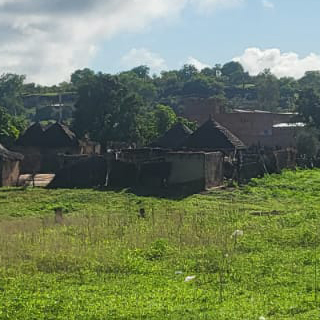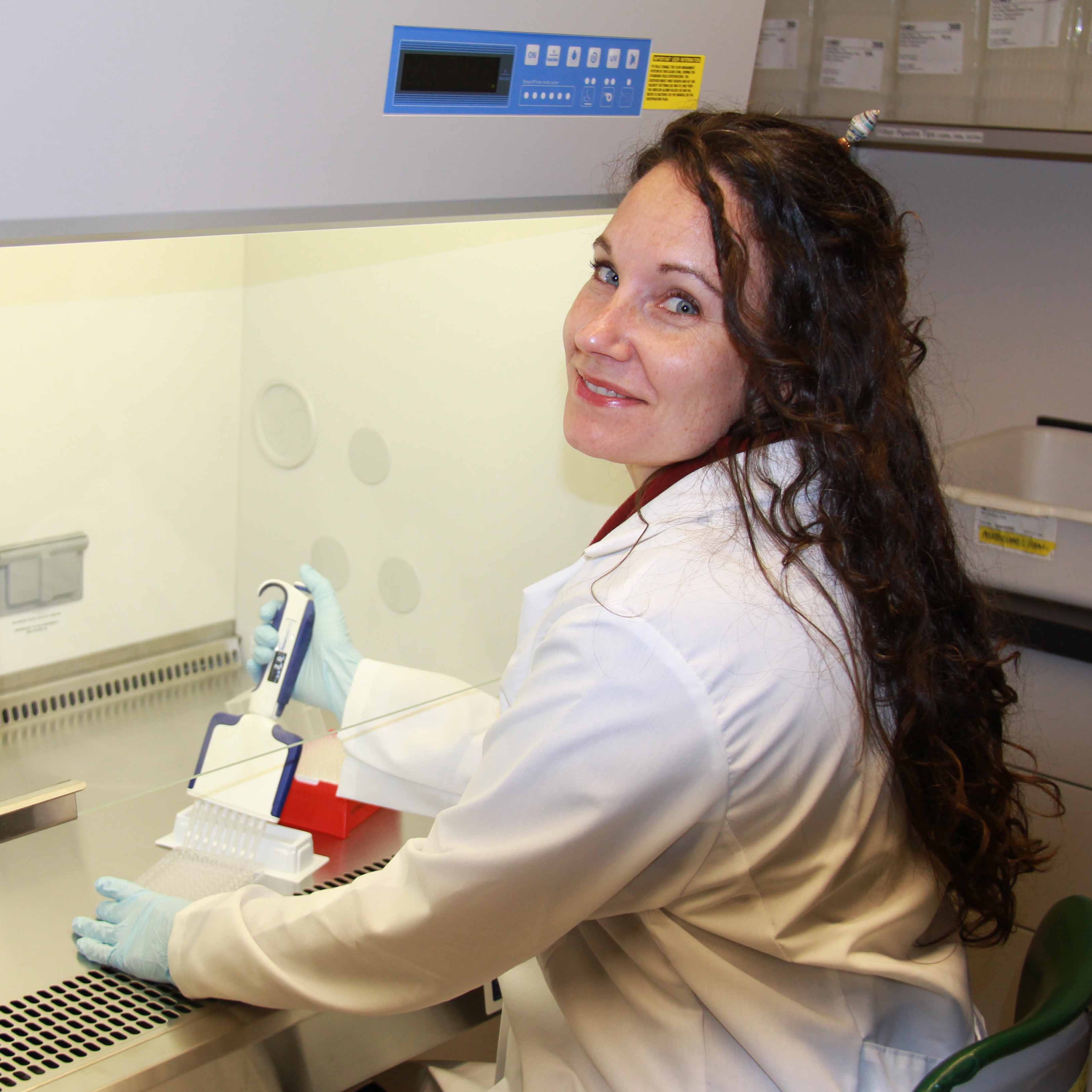Faculty & Staff
Angela Luis
Associate Professor of Population & Disease Ecology
Contact
- Office
- FOR 207A
- Phone
- (406) 243-6606
- angela.luis@umontana.edu
- Office Hours
By appointment
- Website
- http://www.cfc.umt.edu/research/disease-ecology/
Education
Post-doctoral: Princeton University, Ecology & Evolutionary Biology, Princeton, NJ (2014); Colorado State University, Department of Biology, Fort Collins, CO & Fogarty International Center, National Institutes of Health, Bethesda, MD (2010-2013)
Ph.D.: Ecology, Penn State University, University Park, PA (2010)
B.S.: Zoology, University of Oklahoma, Norman, OK (2000)
Courses Taught
- Conservation of Wildlife Populations (WILD 470)
- Ecology of Infectious Diseases (BIOM 460, formerly WILD 491)
- Theoretical Ecology (WILD 595)
- Communicating Science (WILD 595)
Research Interests
My research lies at the intersection of population, community and disease ecology.
A particular focus is the importance of host ecology in determining disease dynamics in wildlife. I explore questions, such as:
- The importance of host population dynamics in determining disease dynamics.
- How interactions between hosts and their environment (climate, seasonality, habitat type, etc) affect disease dynamics.
- How do species diversity and community composition affect disease transmision?
- Can we predict when outbreaks will occur?
- What makes a good reservoir host for zoonotic disease (passed from animals to humans)?
- Are certain taxa more likely to host zoonotic pathogens?
- Are there certain host characteristics that correlate to hosting more pathogens?
- What leads to transmission of pathogens between species?
I am also more broadly interested in community ecology and how species interactions influence dynamics of populations, asking questions such as
- How are populations regulated?
- What's the importance of bottom-up (primary productivity) versus top-down (predators) influences?
- How do multiple predators and prey interact to determine community dynamics?
- How does harvest of one species affect management of other species in a community?
Selected Publications
Mitchell, C.L., A.R. Schwarzer, A. Miarinjara, C.O. Jarrett, A.D. Luis, B.J. Hinnebusch. 2022. A role for early-phase transmission in the enzootic maintenance of plague. PLoS Pathogens 18:e1010996.
Eleftheriou, A., S.H. Williams, and A.D. Luis. 2022. Physiological links with behavior and fitness: The acute adrenocortical response predicts trappability but not survival in male and female deermice. Hormones and Behavior 143:105183.
Sells, S.N. M.S. Mitchell, D.E. Ausband, A.D. Luis, D.J. Emlen, K.M. Prodruzney, J.A. Gude. Economical defence of resources structures territorial space use in a cooperative carnivore. Proceedings of the Royal Society B 289:20212512.
Eleftheriou, A., A.J. Kuenzi, and A.D. Luis. 2021. Heterospecific competitors and seasonality can affect host physiology and behavior, key factors in disease transmission. Ecosphere 12:e03494.
Lekberg, Y., C.A. Arnillas, E.T. Borer, L.S. Bullington, N. Fiere, P.G. Kennedy, J.W. Leff, A.D. Luis. E.W. Seabloom, J.A. Henning. 2021. Nitrogen and phosphorus fertilization consistently favor pathogenic over mutualistic fungi in grassland soils. Nature Communications 12: 3484.
Clark, T.J., J.S. Horne, M. Hebblewhite, and A.D. Luis. 2021. Stochastic predation exposes prey to predator pits and local extinction. Oikos 130:300-309.
Eleftheriou, A. and A.D. Luis. 2020. Leuckocyte evaluation of the free-ranging deermouse (Peromyscus maniculatus) from Montana, USA. Journal of Wildlife Diseases 56:717-720.
Clark, T.J. and A.D. Luis. 2020. Nonlinear population dynamics are ubiquitous in animals. Nature Ecology and Evolution 4:75-81.
Luis, A.D., A.J. Kuenzi, and J.N. Mills. 2018. Species diversity concurrently dilutes and amplifies transmission in a zoonotic host-pathogen system through competing mechanisms. Proceedings of the National Academy of Sciences 115:7979-7984.
D.T.S. Hayman, A.D. Luis, O. Restif, K.S. Baker, A.R. Fooks, C. Leach, D.L. Horton, R. Suu-Ire, A.A. Cunningham, J.L.N. Wood, C.T. Webb. 2018. Maternal antibody and the maintenance of a lyssavirus in populations of seasonally breeding African bats. PLoS One 13:e0198653.
E.E. Gorsich, A.D. Luis, M.G. Buhnerkempe, D.A. Grear, K. Portacci, R.S. Miller, C.T. Webb. 2016. Mapping U.S. cattle shipment networks: spatial and temporal patterns of trade communities from 2009-2011. Preventative Veterinary Medicine 134:82-91.
Luis, A.D., T.J. O’Shea, D.T.S. Hayman, J.L.N. Wood, A.A. Cunningham, A.T. Gilbert, J.N. Mills, C.T. Webb. 2015. Network analysis of host-virus communities in bats and rodents reveals determinants of cross-species transmission. Ecology Letters 18:1153-1162.
Luis, A.D., R.J. Douglass, J.N. Mills, O.N. Bjørnstad. 2015. Environmental fluctuations lead to predictability in Sin Nombre hantavirus outbreaks. Ecology 96:1691-1701.
Carver, S.S., J.N. Mills, C.A. Parmenter, R.R. Parmenter, K. Richardson, R.L. Harris, R.J. Douglass, A.J. Kuenzi, A.D. Luis. 2015. Toward a mechanistic understanding of environmentally forced zoonotic disease emergence: Sin Nombre hantavirus. Bioscience 65:651-666.
Tian H.Y.*, P.B. Yu*, A.D. Luis*, B. Peng, B. Cazalles, M. Laine, S.Q. Huang, C.F. Ma, S. Zhou, J. Wei, S. Li, X.L. Lu, J.H. Qu, J.H. Dong, S.L. Tong, J.J. Wang, B.T. Grenfell, B. Xu. 2015. Changes in rodent abundance and weather conditions potentially drive hemorrhagic fever with renal syndrome outbreaks in Xi’an, China, 2005-2012. PLoS Neglected Tropical Diseases 9:e0003530. (* equal contribution authors)
Pepin, K.M., C.B. Leach, C. Marques-Toledo, K.H. Lass, K.S. Paixao, A.D. Luis, D.T.S. Hayman, N. Johnson, M. Buhnerkepmpe, S.S. Carver, D.A. Grear, K. Tsao, A.E. Eiras, C.T. Webb. 2015. Utility of mosquito surveillance data for spatial prioritization of vector control against dengue viruses in three Brazilian cities. Parasites and Vectors 8:98.
Peel, A.J., J.R.C.Pulliam, A.D. Luis, R.K. Plowright, D.T.S. Hayman, T.J. O’Shea, J.L.N Wood, C.T. Webb, O. Restif. 2014. The effect of seasonal birth pulses on pathogen persistence in a wildlife population. Proceedings of the Royal Society, B: Life Sciences 281:20132962.
O’Shea, T.J., P.M. Cryan, A.A. Cunningham, D.T.S. Hayman, A.D. Luis, A.J. Peel, R.K. Plowright. 2014. Bat flight and emerging zoonotic viruses. Emerging Infectious Diseases 20:741-745.
Luis, A.D., D.T.S. Hayman, T.J. O’Shea, P.M. Cryan, A.T. Gilbert, J.R.C. Pulliam, J.N. Mills, M.E. Timonin, C.K.R. Willis, A.A. Cunningham, A.R. Fooks, C.E. Rupprecht, J.L.N. Wood, C.T. Webb. 2013. A comparison of bats and rodents as reservoirs of zoonotic viruses: Are bats special? Proceedings of the Royal Society B: Life Sciences 280:20122753. (Featured in Research Highlights in Nature 494:150-151.)
Restif, O., D.T.S. Hayman, J.R.C. Pulliam, R.K. Plowright, D.B. George, A.D. Luis, A.A. Cunningham, R.A. Bowen, A.R. Fooks, T.J. O’Shea, J.L.N. Wood, C.T. Webb. 2012. Model-guided fieldwork: practical guidelines for multi-disciplinary research on wildlife ecological and epidemiological dynamics. Ecology Letters 15:1083-1094.
Luis, A.D., R.J. Douglass, P.J. Hudson, J.N. Mills, O.N. Bjørnstad. 2012. Sin Nombre Hantavirus Decreases Survival of Male Deer Mice. Oecologia 169:431-439.
Luis, A.D., R.J. Douglass, J.N. Mills, O.N. Bjørnstad. 2010. The effect of seasonality, density, and climate on the population dynamics of Montana deer mice, important reservoir hosts for Sin Nombre hantavirus. Journal of Animal Ecology 79:462-470. (Featured in a Virtual Issue on ‘Animal Ecology – legacy of Charles S Elton’)
Luis, A.D. and P.J. Hudson. 2006. Hibernation patterns in mammals: a role for bacterial growth? Functional Ecology 20: 471-477.

